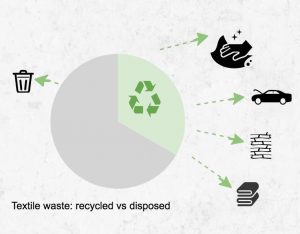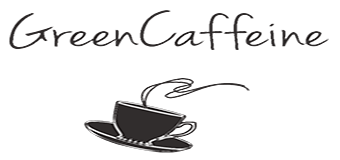I-did Slow Fashion: Helping to close the cycle while serving a social purpose!
Mireille Geijsen was inspired nearly 10 years ago to found I-Did Slow Fashion (run today with Michiel Dekkers and a dedicated team), a social enterprise that really does something about textile waste in The Netherlands. By means of a circular business model (in contrast with the linear “take- make- consume-dispose”-model), used/ unsold textile is processed into circular products where the raw material is used over and over again.  Hence a “closed cycle” approach to production the process. At the same time I-did contributes to inclusion of people distant to the Dutch labor market. Let’s see how I-did helps to close the cycle.
Hence a “closed cycle” approach to production the process. At the same time I-did contributes to inclusion of people distant to the Dutch labor market. Let’s see how I-did helps to close the cycle.
An economy in cycles has an impact on waste management. (Reuse of materials result in less waste). One of the developments affecting the amount of textile waste is Fast Fashion: clothes we see on the cat walk get reproduced in high volumes, found in stores every 2 to 3 weeks.
Our consumer demands are satisfied and we change the contents of our closets by wearing more (in volume) and at the same time wearing less (in matter of time).
When translated in numbers, the reality is shocking: a yearly total of 240 Million kg of textile is thrown away in the Netherlands. Only one third of this is recycled, processed and finally disappears between walls (as isolation material), under car hoods and is used as moving blankets….. not visible at all.
5 aspects of a circular process applied by I-did:
- All materials used are recyclable and upgradable. The felt can be used as raw material for the production of new products.
- A system is put in place with local partners for collecting textile (Sympany).
- Only locally sourced textile is used
- I-did works with local partners when processing the textile to felt.
- I-did involves their stakeholders in their sustainability ambitions. Consumers are informed through campaigns and I-did works closely with businesses that share their sustainable mindset (Ikea, Heineken). This leads to;
- Consumers are becoming aware through their retail network.
- Businesses know something can be done with their textile waste (instead of ending in the waste pile).
- The story behind the product is being told. Business to business and Business to Consumer
5 ways in which I-did contributes to social inclusion and empowerment:
- I-did participants have pride in their work. They can proudly say “I did it”. They have meaningful jobs.
- Training and development programs are in place. Every participant receives sewing lessons (besides product manufacturing). The diploma accredits their knowledge and opens doors for reintegration. Through education participants are triggered to discover hidden talents or competences.
- Continuous on- the-job training is provided through sewing of felt bags and accessories. Participants get job experience, and acquire working competences. A dedicated job coach helps connecting the dots between the participants and the labor market.
- Also social and emotional aspects can be covered. Everyone has a different story and struggle. Working sometimes is a fun way of escape, where all participants can be who they really are.
- The I-did participants are from a diverse background. There is no distinction in raise, age or gender.
I-did is a social enterprise that helps people to be part of a movement. A movement that contributes to awareness raising about keeping the environment (less textile waste) and the importance of inclusion in society.
All efforts are geared to these two aspects. This is the strength of I-did: the combination of impact on planet and people.
A lot of people ask me, where did you buy that bag, and what is it made from?
Just visit www.i-did.nl to get to know this awesome social enterprise.








Leave a Reply
Want to join the discussion?Feel free to contribute!